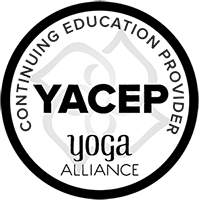Yin Yoga & Anatomy Teacher Training II
6 day/50 hour certified teacher training - based on the teachings of Paul & Suzee Grilley
"Tell me, and I will forget. Show me, and I may remember. Involve me, and I will understand." (Confucius)
Following Confucius' guiding principles, our main focus in this Yin Yoga training is on sensing, feeling and experiencing the Yin Yoga practice and the unique anatomy of the individual bone structure. You will analyse yourself and each other, conduct passive assists, feel the compressions and tensions in your fellow students and expand your knowledge through experience.
Welcome to Yin Yoga and Anatomy Teacher Training II
For all yoga teachers who would like to deepen their knowledge of Yin Yoga - the silent practice - as well as the anatomical and energetic theories of the practice, we present our 50-hour Module II intensive course.
The prerequisite for participation in the Yin Yoga & Anatomy Teacher Training II is Yin Therapy’s Yin Yoga & Anatomy Teacher Training I.
This 6 day / 50-hour certified intensive yoga teaching course comprises 6 sections:
1. Yin Yoga Asanas
In this Yin Yoga teacher training, the focus of our asana practice is on various points of attention within functional yoga. While Module I focused on the technical, mechanical understanding of the asanas, Module II focuses on feeling and experiencing the physical, energetic and emotional body during a practice.
2. Anatomy is the Key
In YYTTI, the focus was on the pelvic girdle, thighs and lower back.
In YYTTII, we will consolidate and expand upon this knowledge. We’ll look in more detail at the muscle groups in the thigh and the lower part of the upper body, learn the names of the muscles, look at their origins and insertions, identify muscular and fascial chains, examining their function and effect on our yin yoga practice.
In addition to compression, this time we will also analyse the tension of the muscular and fascial tissue and the effect on the asana practice. This results in logical assists for our students.
Other topics covered by the programme:
• Knee joint in detail – structure, movement, possible injuries
• Hip joint in detail – structure, movement, possible injuries
3. Biomechanics in Yin Yoga
Why do we practice Yang and Yin Yoga Asanas from a physical point of view? Yoga practice puts tissue under tensile and compressive stress. This stimulation leads to an adaptation of the tissue and to stress-resistant, healthy tissue. We explain what an optimal workout should look like according to the latest findings.
4. Emotions during Hip Openers
Why can things suddenly become emotional during a hip opener class, during backbends or during long-held asanas? In this segment we look at how stress and trauma are processed in the body and how a yoga asana can bring them to the surface and release them.
5. Passive Assists
In section 5 we learn passive, hand-on assists.
We often encounter students whose mobility does not allow them to practise certain asanas, e.g. Virasana or Supta Virasana either due to stiffness, lack of flexibility, age or injuries.
As teachers, we use passive assists both when teaching group classes and one-on-one personal training sessions.
We analyse the function of the pose and have an alternative passive assist in our “yin yoga tool box” for each muscle group that is to be worked on.
This means that even our “less flexible” students can also benefit from the practice.
Passive assists are particularly helpful for various prior injuries or after back, shoulder, knee or hip surgery; they are also helpful for older yoga practitioners.
6. Yin Therapy - Personal Training
In YYTT II we lay down the fundamental understanding of the benefits of a Yin Yoga practice and how to deal with individual and specific physical and mental problems of our students.
According to statistics, 25% of the yoga students who come to us have these specific problems and have taken up yoga because of this.
We support these people in yoga classes, but also in personal training.
The focus of this unit is:
• Stress in the West
• Back pain in the West
• Suggested solutions through Yin Therapy's holistic approach
7. Practical Meditation
In this segment we explain the morning meditation in detail and point out potential allies and opponents. We also give practical meditation tips (location, time, length, etc.) and how to build up a regular meditation practice. Only through regular practice and experiential knowledge does teaching meditation become heartfelt and authentic.
We hope you enjoy YYTT II :-)
After each successfully completed module, participants receive a Yoga Alliance certification until the final 200 or 300 hour Yoga Alliance certificate is issued after the last module. All certificates (hours) can also be submitted to the Yoga Alliance as “Continuing Education”.
““Markus & Karin are people that have touched my heart. Furthermore, I particularly enjoyed the practice and the excellent combination of knowledge delivered with ease and humour.” (YYTTI Hamburg)
”
““I especially enjoyed the structure and order of the course, the music, song and dance ;-), the transition between theory and practice, the good tips for relevant literature etc...Super. I’m already so looking forward to YYTTIII.” (YYTTII Hamburg)
”
““I have never experienced such a funny, intellectual, full of wit, first class presentation before! Bravo!” (YYTTI Vienna)
”









